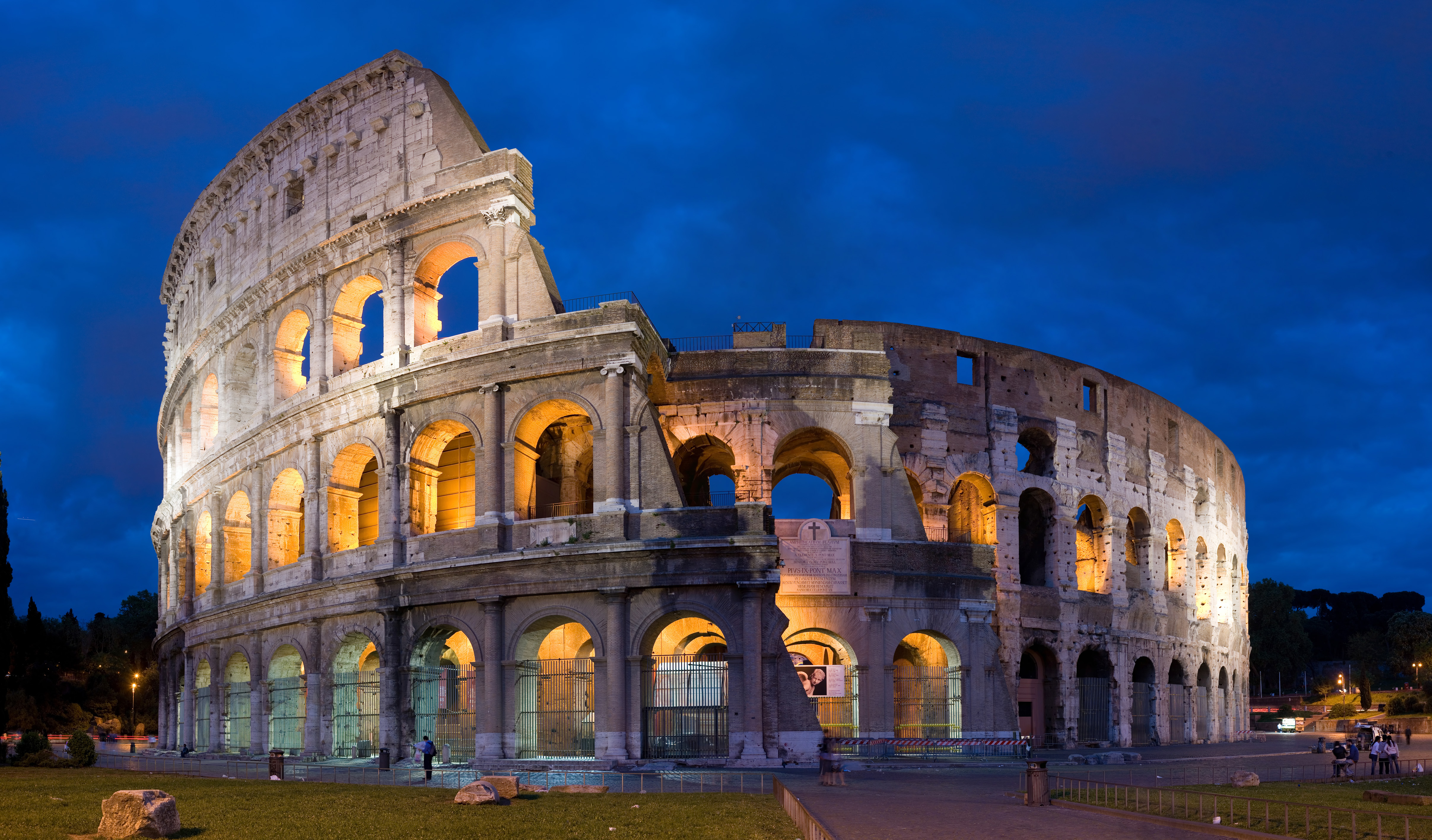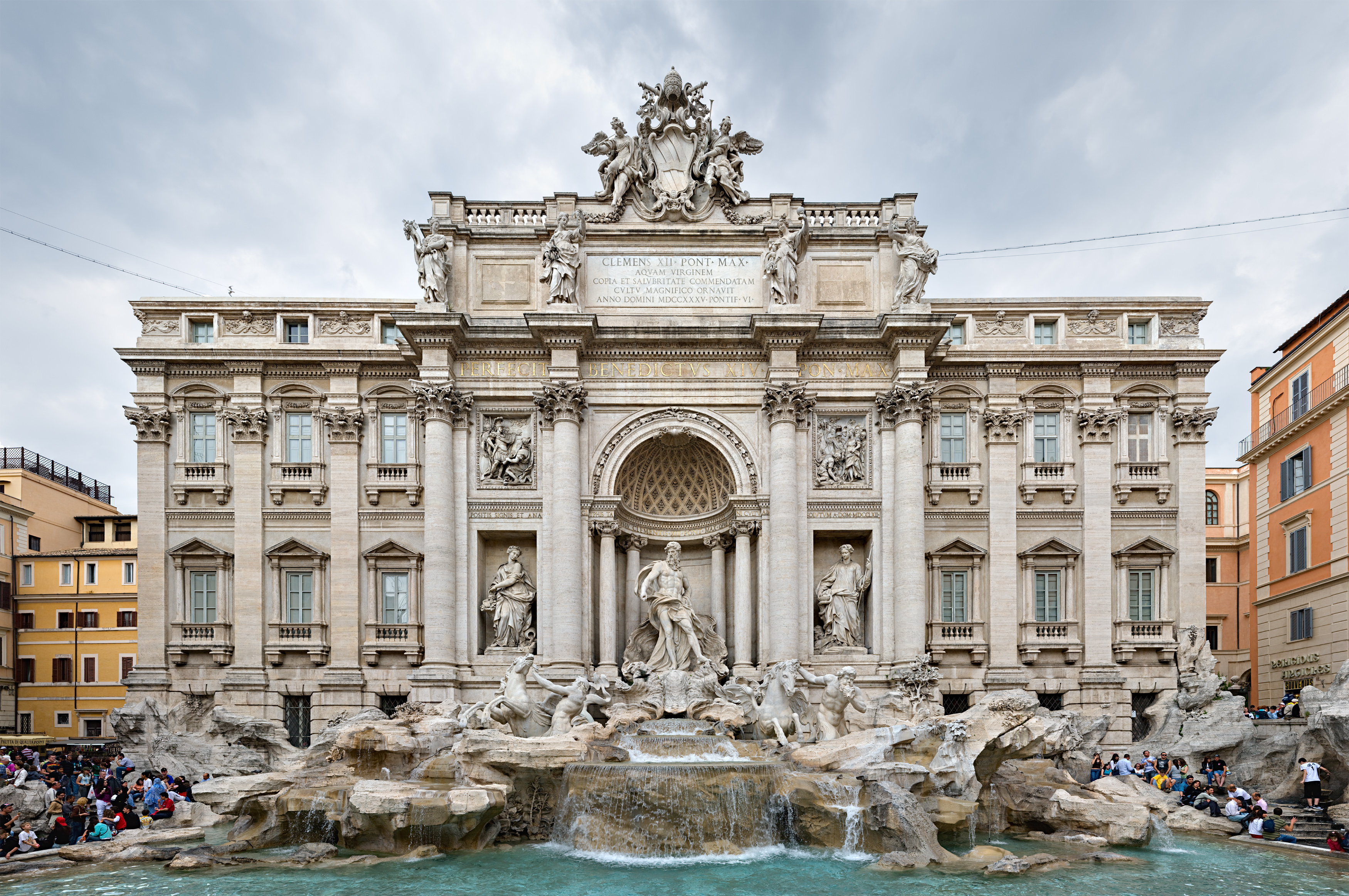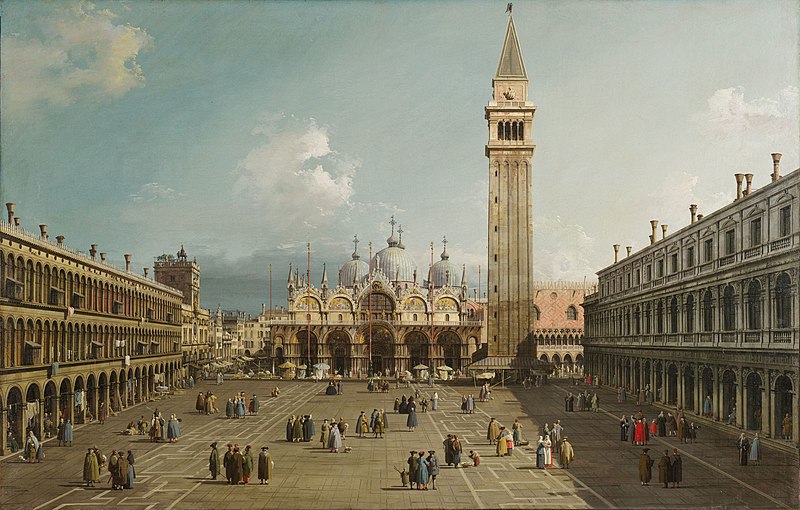-

Colosseum
The Colosseum, originally the Flavian Amphitheatre, is an elliptical amphitheatre in the center of the city of Rome, Italy, the largest ever built in the Roman Empire. It is one of the greatest works of Roman architecture and engineering.
Originally capable of seating around 50,000 spectators, the Colosseum was used for gladiatorial contests and public spectacles. It remained in use for nearly 500 years with the last recorded games being held there as late as the 6th century. As well as the traditional gladiatorial games, many other public spectacles were held there, such as mock sea battles, animal hunts, executions, re-enactments of famous battles, and dramas based on Classical mythology. The building eventually ceased to be used for entertainment in the early medieval era. It was later reused for such varied purposes as housing, workshops, quarters for a religious order, a fortress a quarry and a Christian shrine.
Although it is now in a ruined condition due to damage caused by earthquakes and stone-robbers, the Colosseum has long been seen as an iconic symbol of Imperial Rome. Today it is one of modern Rome's most popular tourists attractions and still has close connections with the Roman Catholic Church, as each Good Friday the Pope leads a torchlit "Way of the Cross" processionch to the amphitheatre.
Trevi Fountain
Largest and most ambitious of the Baroque Fountains in Rome. In 1629,Pope Urban VIII, finding the earlier fountain insufficiently dramatic, asked Bernini to sketch possible renovations, but when the Pope died the project was abandoned. Bernini's lasting contribution was to resite the fountain from the other side of the square to face the Quirinal Palace (so the Pope could look down and enjoy it). Though Bernini's project was torn down for Salvi's fountain, there are many Bernini touches in the fountain as it was built. An early, striking and influential model by Pietro da Cortona, preserved in the Albertina, Vienna, also exists, as do various early eighteenth century sketches, most unsigned, as well as a project attributed to Nicola Michetti one attributed to Ferdinando Fugaand a French design by Edme Bouchardon.
Competitions had become the rage during the Baroque era to design buildings, fountains, and even the Spanish Steps. In 1730 Pope Clement XII organized a contest in which Nicola Salvi initially lost to Alessandro Galilei — but due to the outcry in Rome over the fact that a Florentine won, Salvi was awarded the commission anyway. Work began in 1732, and the fountain was completed in 1762, long after Clement's death, when Pietro Bracci's 'Neptune' was set in the central niche.
Salvi died in 1751, with his work half-finished, but before he went he made sure a stubborn barber's unsightly sign would not spoil the ensemble, hiding it behind a sculpted vase. The Trevi Fountain was finished in 1762 by Giuseppe Pannini, who substituted the present bland allegories for planned sculptures of Agrippa and "Trivia", the Roman virgin.
Palazzo Vecchio
Is the town hall of Florence, Italy. Originally called the Palazzo della Signoria, after the Signoria of Florence, the ruling body of the Republic of Florence, it was also given several other names: Palazzo del Popolo, Palazzo dei Priori, and Palazzo Ducale, in accordance with the varying use of the palace during its long history. The building acquired its current name when the Medici duke's residence was moved across the Arno to the Palazzo Pitti.
In 1299, the commune and people of Florence decided to build a palace, worthy of the city's importance and giving greater security, in times of turbulence, to the magistrates. Arnolfo di Cambio began constructing it upon the ruins of Palazzo dei Fanti and Palazzo dell'Esecutore di Giustizia, once owned by the Uberti family. This tower contains two small cells, that, at different times, imprisoned Cosimo de' Medici and Girolamo Savonarola. The tower is named after its designer Torre d'Arnolfo. The solid cubicle shaped building is enhanced by the simple tower with its Lederle clock. The large, one-handed clock was originally constructed by the Florentine Nicolò Bernardo, but was replaced in 1667 by a clock made by Vincenzo Viviani.
The cubical building is built in solid rustic stonework, with two rows of two-lighted Gothic windows, each with a trefoil arch. Michelozzo Michelozzi added decorative bas-reliefs of the cross and the lily in the spandrels between the trefoils. The building is crowned with projecting crenellated battlement, supported by small arches and corbels. Under the arches are a repeated series of nine painted coats of arms of the Florentine republic. Some of these arches can be used as embrasures for dropping heated liquids or rocks on invaders.
The name was officially changed after Cosimo moved to the Palazzo Pitti, renaming his former palace the Palazzo Vecchio, the "Old Palace", although the adjacent town square, the Piazza della Signoria, still bears the old name. Cosimo commissioned Giorgio Vasari to build an above-ground walkway, the Vasari corridor, from the palace, through the Uffizi, over the Ponte Vecchio to the Palazzo Pitti. Cosimo I also moved the seat of government to the Uffizi. The palace gained new importance as the seat of United Italy's provisional government from 1865-71, at a moment when Florence had become the capital of the kingdom of Italy. Although most of the Palazzo Vecchio is now a museum, it remains the symbol of local government: since 1872 it has housed the office of the

Piazza San Marco
Often known in English as St Mark's Square, is the principal square of Venice, Italy.A remark often attributed to Napoleon calls the Piazza San Marco "The drawing room of europe". It is one of the few great urban spaces in a Europe where human voices prevail over the sounds of motorized traffic, which is confined to Venice's waterways. It is the only urban space called a piazza in Venice; the others, regardless of size, are called campi. As the central landmark and gathering place for Venice, Piazza San Marco is extremely popular with tourists, photographers, and Venetian pigeons.
The Piazza originated in the 9th century as a small area in front of the original St Mark's Basilica. It was enlarged to its present size and shape in 1177, when the Rio Batario, which had bounded it to the west, and a dock, which had isolated the Doge's Palace from the square, were filled in. The rearrangement was for the meeting of Pope Alexander III and the Emperor Frederick Barbarossa.The Piazza has always been seen as the centre of Venice. It was the location of all the important offices of the Venetian state, and has been the seat of the archbishopric since the 19th century. It was also the focus for many of Venice's festivals. It is a greatly popular place in Italy even today.

Tower of Pisa
The Tower of Pisa (La Torre di Pisa) is the campanile, or freestanding bell tower, of the cathedral of the Italian city of Pisa. It is situated behind the Cathedral and it is the third structure by time in Pisa's Piazza del Duomo (Cathedral Square).Although intended to stand vertically, the tower began leaning to the southeast soon after the onset of construction in 1173 due to a poorly laid foundation and loose substrate that has allowed the foundation to shift direction.
The height of the tower is 183.27 ft from the ground on the lowest side and 186.02 ft on the highest side. The width of the walls at the base is 13.42 ft and at the top 8.14 ft. Its weight is estimated at 14,500 tonnes. The tower has 296 or 294 steps ;the seventh floor has two fewer steps on the north-facing staircase. The tower leans at an angle of 3.97 degrees. This means that the top of the tower is 3.9 meters from where it would stand if the tower were perfectly vertical.


Pompeii
A ruined and partially buried Roman city near modern Naples in the Italian region of Campania, in the territory of the comune of Pompei. It, along with Herculaneum (its sister city), was destroyed, and completely buried, during a catastrophic eruption of the volcano Mount Vesuvius spanning two days on 24 August 79 AD. The volcano collapsed higher roof-lines and buried Pompeii under many meters of ash and pumice, and it was lost for nearly 1700 years before its accidental rediscovery in 1748. Since then, its excavation has provided an extraordinarily detailed insight into the life of a city at the height of the Roman Empire. Today, it is one of the most popular tourist attractions of Italy and a UNESCO World Heritage Site.By: Nicole Bonifaz


